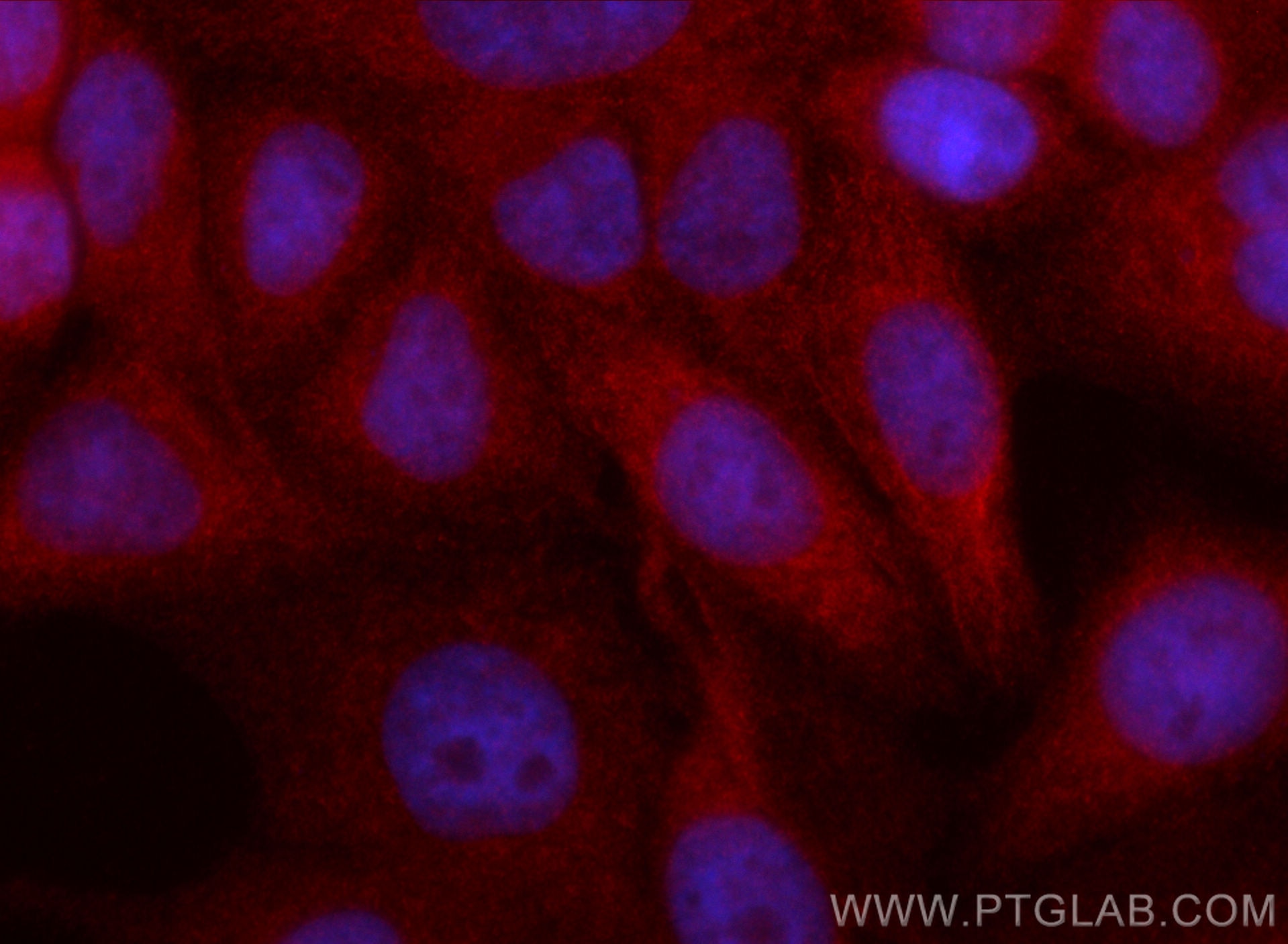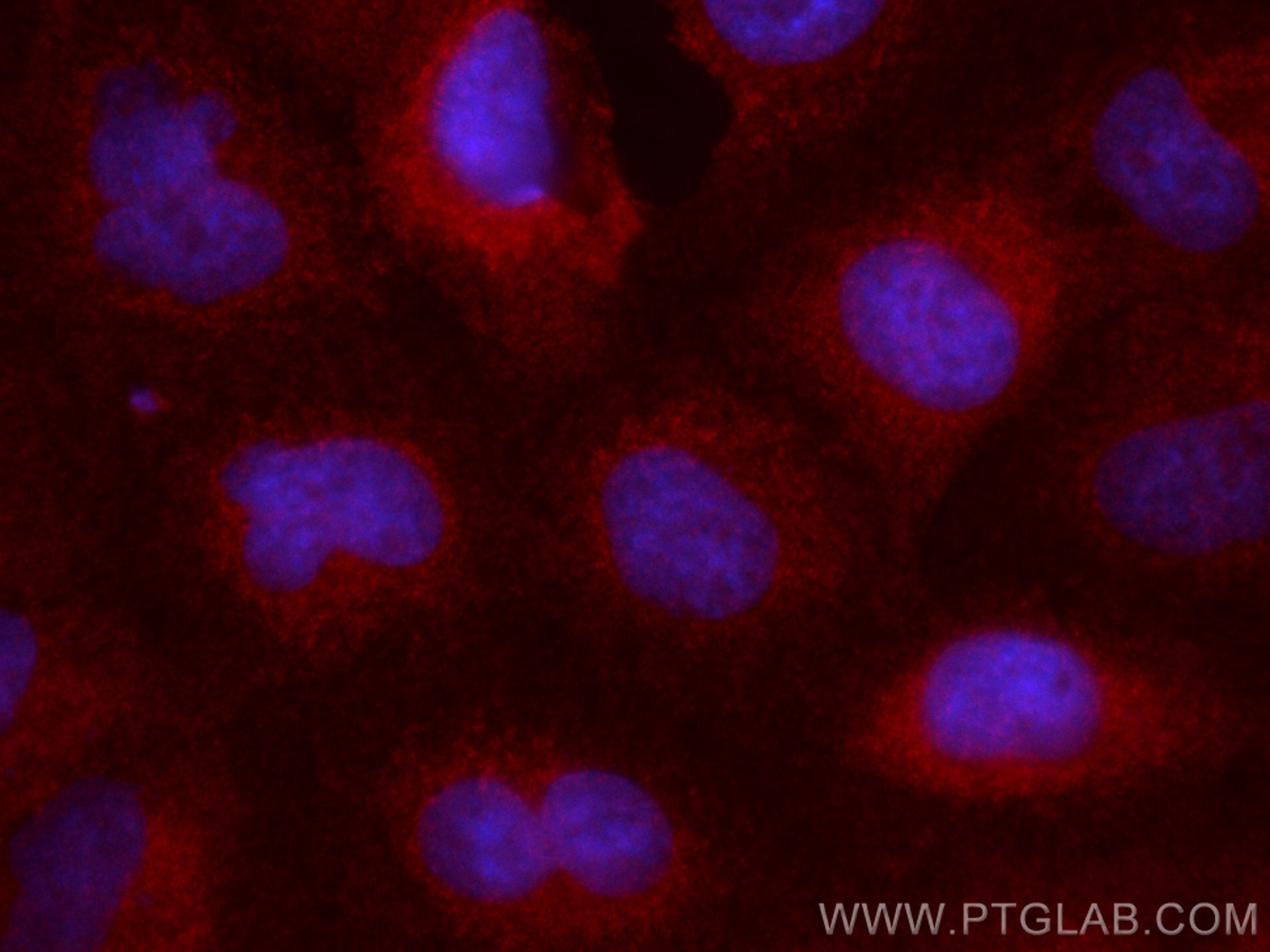Tested Applications
| Positive IF/ICC detected in | HepG2 cells, A549 cells |
Recommended dilution
| Application | Dilution |
|---|---|
| Immunofluorescence (IF)/ICC | IF/ICC : 1:400-1:1600 |
| It is recommended that this reagent should be titrated in each testing system to obtain optimal results. | |
| Sample-dependent, Check data in validation data gallery. | |
Product Information
CL594-17215 targets NLRX1 in IF/ICC applications and shows reactivity with human, mouse, rat samples.
| Tested Reactivity | human, mouse, rat |
| Host / Isotype | Rabbit / IgG |
| Class | Polyclonal |
| Type | Antibody |
| Immunogen |
CatNo: Ag11000 Product name: Recombinant human NLRX1 protein Source: e coli.-derived, PGEX-4T Tag: GST Domain: 359-708 aa of BC013199 Sequence: EAVAQAMVLEMFREEDYYNDDVLDQMGASILGVEGPRRHPDEPPEDEVFELFPMFMGGLLSAHNRAVLAQLGCPIKNLDALENAQAIKKKLGKLGRQVLPPSELLDHLFFHYEFQNQRFSAEVLSSLRQLNLAGVRMTPVKCTVVAAVLGSGRHALDEVNLASCQLDPAGLRTLLPVFLRARKLGLQLNSLGPEACKDLRDLLLHDQCQITTLRLSNNPLTEAGVAVLMEGLAGNTSVTHLSLLHTGLGDEGLELLAAQLDRNRQLQELNVAYNGAGDTAALALARAAREHPSLELLQGVAIQMCWKLPLLPYAHLWTPRMPSHWCFLLILMPPLPQWYDGLVAPRGRCT Predict reactive species |
| Full Name | NLR family member X1 |
| Calculated Molecular Weight | 975 aa, 108 kDa |
| Observed Molecular Weight | 100-110 kDa |
| GenBank Accession Number | BC013199 |
| Gene Symbol | NLRX1 |
| Gene ID (NCBI) | 79671 |
| Conjugate | CoraLite®594 Fluorescent Dye |
| Excitation/Emission Maxima Wavelengths | 588 nm / 604 nm |
| Form | Liquid |
| Purification Method | Antigen affinity purification |
| UNIPROT ID | Q86UT6 |
| Storage Buffer | PBS with 50% glycerol, 0.05% Proclin300, 0.5% BSA, pH 7.3. |
| Storage Conditions | Store at -20°C. Avoid exposure to light. Stable for one year after shipment. Aliquoting is unnecessary for -20oC storage. |
Background Information
NLRX1 (Nucleotide-binding oligomerization domain, leucine-rich repeat containing X1) is a member of the NOD-like receptor (NLR) family and is unique among NLRs due to its localization to the mitochondrial matrix. NLRX1 is a negative regulator of innate immunity, particularly in viral infections. It interacts with the mitochondrial antiviral signaling protein (MAVS) to attenuate antiviral responses. NLRX1 has been implicated in various diseases, including multiple sclerosis, colorectal cancer, and ischemia-reperfusion injury. Its role in controlling inflammation and mitochondrial function makes it a potential therapeutic target.
Protocols
| Product Specific Protocols | |
|---|---|
| IF protocol for CL594 NLRX1 antibody CL594-17215 | Download protocol |
| Standard Protocols | |
|---|---|
| Click here to view our Standard Protocols |






